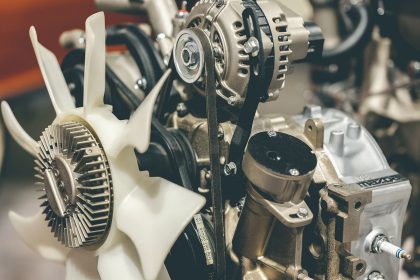Diesel Engines & Pumps

Most modern diesel engines use the conventional cylinder and piston arrangement operated with a slider crank mechanism common to other internal combustion engines such as the gasoline engine. Considering this basic mechanism, there is very little difference between the basic structure of diesel and gasoline engines.
Conceptually, diesel engines operate by compressing air to high pressure/temperature and then injecting a small amount of fuel into this hot compressed air. The high temperature causes the small amount of highly atomized injected fuel to evaporate. Mixing with the hot surrounding air in the combustion chamber, the evaporated fuel reaches its auto-ignition temperature and burns to release the energy that is stored in that fuel [Heywood 1988].
The definition of the diesel engine has evolved over the years. For example, in the early 20th century, a distinction was made between a “true Diesel Engine” and one that shared some aspects of the diesel cycle but did not encompass all aspects considered to be part of the diesel cycle as then envisioned. One early definition of a “true Diesel Engine” is one having the following features [Purday 1919]:
- Compression sufficient to produce the temperature requisite for spontaneous combustion of the fuel.
- Injection of fuel by a blast of compressed air.
- A maximum cycle pressure (attained during combustion) not greatly exceeding the compression pressure, i.e., absence of pronounced explosive effect.



